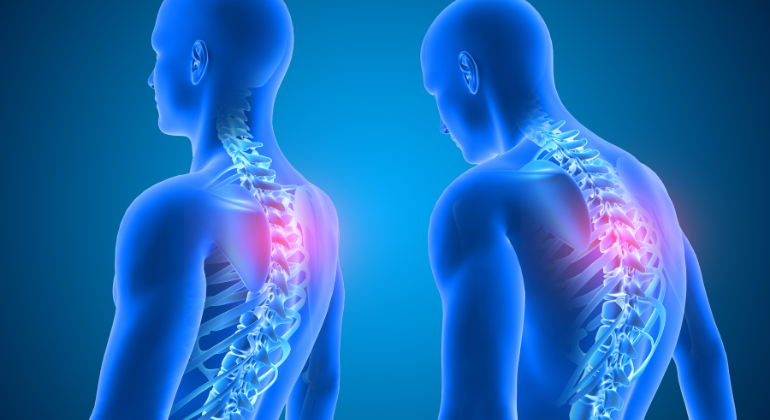Navel displacement, or nabhi displacement, is a condition where the navel shifts from its natural position in the abdomen. Though it may sound like a minor issue, the displacement of the navel can lead to a variety of physical discomforts and functional disruptions within your body. From digestive disturbances to muscular imbalances, navel displacement affects several key systems in the body, often causing discomfort and limiting movement.
Understanding what happens when your navel is displaced can help you identify the condition early and seek effective solutions. In this blog, we’ll break down the effects of navel displacement on the body, its symptoms, and how it impacts vital functions like digestion, posture, and movement.
Effects of Navel Displacement on the Body
The body relies on a stable core to maintain balance, movement, and proper digestion. When the navel shifts out of alignment, it disturbs the structural and functional harmony of the abdominal area. Here’s what happens:
1. Core Instability:
- The navel is located at the center of the abdominal muscles, which play a crucial role in stabilizing the body. When displaced, it can weaken the core and lead to imbalance in the surrounding muscles.
2. Digestive Issues:
- Navel displacement puts pressure on the digestive system, often resulting in symptoms like bloating, gas, and constipation. The irregular positioning of the navel can also disrupt abdominal organ function, slowing down digestion.
3. Poor Circulation:
- Misalignment in the abdominal area can compress blood vessels and restrict circulation, which contributes to swelling, cramping, or a feeling of tightness in the abdomen.
4. Postural Imbalances:
- A displaced navel often alters the body’s posture, which can lead to back pain, stiffness, and difficulty maintaining balance during movement.
Symptoms of Navel Displacement

How do you know if your navel is displaced? The condition presents itself with a variety of symptoms that can often be mistaken for other health issues. Being able to recognize the symptoms of navel displacement is the first step toward recovery.
Common Symptoms Include:
- Abdominal Pain:
- A sharp or dull ache in the abdominal region is one of the most common signs. The pain may worsen after physical activity or heavy lifting.
- Digestive Distress:
- Symptoms like bloating, constipation, diarrhea, or irregular bowel movements are common due to the strain navel displacement puts on the digestive system.
- Back Pain:
- Misalignment of the navel affects your posture, leading to stiffness or pain in the lower back and hips.
- Weakness or Fatigue:
- A weakened core often results in reduced energy levels and fatigue, especially during physical activities.
- Difficulty with Movement:
- You may feel stiffness or discomfort when bending, twisting, or lifting objects, as the muscles surrounding the navel become strained.
Quick Tip:
If you experience any of these symptoms persistently, it’s important to consult a professional for a proper diagnosis.
What Happens When Your Navel Is Displaced?
When the navel is displaced, the body experiences a chain reaction of imbalances that affect both its structural and functional aspects. Let’s dive deeper into the physical changes that occur:
1. Muscle Strain and Tension:
- A displaced navel overstretches some abdominal muscles while tightening others, leading to discomfort and stiffness in the midsection. This strain can extend to the lower back, causing pain and reduced flexibility.
2. Impact on Digestion:
- Navel displacement can compress or irritate the abdominal organs, slowing down digestion and leading to symptoms like gas, bloating, or constipation.
3. Reduced Range of Motion:
- When the core muscles lose stability, it can become difficult to perform basic movements like bending, stretching, or even sitting for extended periods.
Pro Tip: Gentle abdominal exercises and stretches, under professional guidance, can help restore alignment and ease these symptoms over time.
Physical Effects of Navel Displacement on Digestion and Muscles
The two most common areas affected by navel displacement are the digestive system and the muscular system. Here’s how these systems are impacted:
Digestive Effects:
- Bloating and Gas:
- Misalignment causes irregular pressure in the abdominal cavity, trapping gas and leading to bloating.
- Constipation:
- A displaced navel can disrupt the flow of food and waste through the intestines, making it harder to pass stools regularly.
Muscular Effects:
- Core Weakness:
- The abdominal muscles lose their ability to stabilize the body, leading to poor posture and reduced strength.
- Muscle Cramps:
- Overstrained muscles may spasm or cramp, especially during physical activity.
Helpful Insight: Improving your diet with fiber-rich foods and staying hydrated can support digestion and reduce abdominal tension.
How Navel Displacement Affects the Body

The ripple effects of navel displacement can extend beyond the abdomen and core, affecting the entire body. Here are some additional ways it impacts your overall health:
1. Posture and Balance:
- With the core muscles out of alignment, maintaining an upright posture becomes challenging. This often results in slouching or leaning, which can strain the back and neck.
2. Energy Levels:
- A misaligned core requires more effort to stabilize, which can leave you feeling fatigued and less capable of performing daily tasks.
3. Emotional Impact:
- Chronic discomfort and reduced mobility can lead to frustration and stress, affecting mental well-being.
Quick Tip: Practicing yoga or deep breathing exercises can help reduce stress while promoting abdominal relaxation.
Conclusion
Navel displacement may seem like a minor condition, but its effects on the body can be significant. From core instability and digestive disturbances to back pain and muscle strain, the impact of a displaced navel extends to multiple systems in the body. Recognizing the symptoms of navel displacement and understanding its effects on digestion, posture, and energy levels can help you take early action.
If you suspect you’re dealing with navel displacement, seek professional guidance. At Painflame, we offer holistic recovery plans that address the root causes and help you restore balance and comfort to your body.
Contact Painflame today to start your journey to better health!
Recent Blog : Best 5 Foods to Fix Navel Displacement
Frequently Asked Questions (FAQs)
Kya navel displacement ka impact breathing par ho sakta hai?
Haan, agar nabhi displacement severe ho, to ye diaphragm aur abdominal muscles par strain daal sakta hai, jisse breathing shallow ho sakti hai. Deep breathing exercises is condition ko improve karne me madad karte hain.
Kya navel displacement immunity par effect daal sakta hai?
Indirectly, haan. Poor digestion aur chronic bloating, jo nabhi displacement ki wajah se hote hain, body ke nutrient absorption ko disrupt karte hain, jisse immunity weak ho sakti hai. Isko balance karne ke liye gut-friendly foods jaise yogurt aur fiber-rich diet lena zaroori hai.
Kya navel displacement heartburn ya acidity cause kar sakta hai?
Yes, jab nabhi displacement digestion ko disrupt karta hai, to food ka proper breakdown slow ho sakta hai, jisse acid reflux aur heartburn ke chances badh jate hain. Proper posture aur digestion-supporting foods isko prevent karte hain.
Kya nabhi displacement blood circulation ko impact karta hai?
Haan, nabhi displacement ke wajah se abdominal area ki blood vessels compress ho sakti hain, jo circulation slow kar deti hai. Iska result swelling, cramping, aur even tightness me ho sakta hai. Staying hydrated aur regular stretches blood flow improve karne me madad karte hain.
Kya navel displacement long-term joint pain ya stiffness ka reason ban sakta hai?
Indirectly, haan. Poor posture jo nabhi displacement ki wajah se hoti hai, hips aur lower back par strain badhati hai, jisse long-term joint pain aur stiffness ka risk badhta hai. Core stability improve karna is impact ko reduce karne ke liye important hai.







